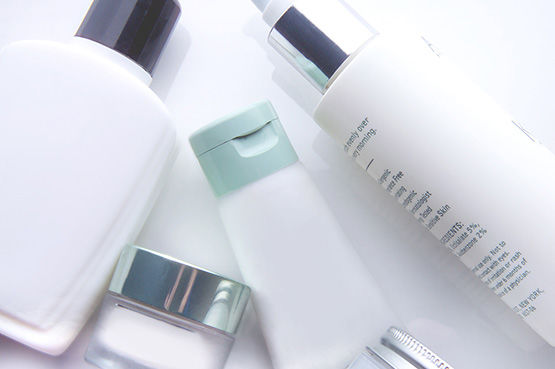New list of allergens for cosmetic products
On July 26, 2023, the European Commission issued Regulation 2023/1545, introducing changes to Regulation (EC) No 1223/2009 of the European Parliament and of the Council, which concerns the labeling of allergenic substances in cosmetic products. This revision confirms the modification and increased number of allergenic substances to be mentioned on cosmetic products, including 56 new substances in addition to the existing 26.
Key changes in this regulation:

Regardless of whether it is in a jar, tube, or bottle, a safety report must be produced for each cosmetic product according to the EU Cosmetics Directive.
A safety report must be established for each cosmetic product, irrespective of the container – bottle, tube, or pot – in accordance with the EU Cosmetics Directive. This list includes components that may cause allergic reactions in certain individuals. These elements are frequently used in perfumes, hair care, and skincare products. They must be clearly indicated on the labeling of cosmetics, even in small quantities, to enable consumers to make an informed decision before using the product.
- This new text updates INCI names, CAS and CE numbers, and consolidates certain substances under a single INCI name.
- It modifies 17 entries in Annex III of Regulation 1223/2009 on Cosmetics and adds 45 new entries.
- Directives regarding the labeling of allergenic substances on cosmetic products undergo adjustments. Now, any substance present in the new list and whose concentration exceeds 0.001% in leave-on products or 0.01% in rinse-off products must be clearly indicated on the product labeling.
- The list of allergens subject to labeling now includes 80 entries.
Among the most common allergens are benzyl alcohol, cinnamal, citral, eugenol, amylcinnamal, and hydroxycitronellal. These elements are commonly used in perfumes and have the potential to trigger allergic reactions in sensitive individuals. Discover the complete list of measurable allergens following this article.
These substances must be noted on the labeling of cosmetic products when they exceed a concentration of 0.01% for rinse-off items and 0.001% for leave-on products. The aim of the European regulation project is to enhance consumer protection against allergies by refining the labeling of fragranced allergens, making it more precise and easier to understand.
When will this regulation take effect?

Only correctly labeled products are marketable and may be sold to consumers.
According to the European Committee for Standardization (CEN):
- As of July 31, 2026, the provisions of this regulation will be effective for products wishing to be placed on the market. This applies to manufacturers and importers wishing to introduce a product to the European Union market for the first time.
- Starting from July 31, 2028, these provisions will apply to products already placed on the market. The implementation phase of this regulation will span a period of 3 to 5 years for products already offered for distribution.
Discover the list of 60 measurable allergens to date
Here is the list of substances classified alphabetically:
- 2,6-Dihydroxy-4-methyl-benzaldehyd (Atranol)
- 3-Methyl-5-(2,2,3-trimethyl-3-cyclopenten-1-yl)-4-penten-2-ol (Ebanol)
- 3-Propylidenphthalid
- 6-Methyl-2H-1-benzopyran-2-on
- Alcool anisique
- Alcool benzylique
- Alcool cinnamique
- Alcool cinnamylique
- Aldéhyde salicylique
- Alpha-isomethyl ionone
- alpha-Damascone
- Alpha-isomethyl ionone
- alpha-Terpinen
- béta-Caryophyllène
- beta-Pinène
- Benzoate de benzyle
- Benzaldéhyde
- beta-Pinène
- Butylphenyl methylpropional
- Camphre
- Carvone
- Chloratranol
- Cinnamate de benzyle
- Cinnamal
- Citral
- Citronellol
- Coumarine
- D-Limonène
- delta-Damascone
- Dimethylphenethylacetat (DMBCA)
- Essigsäure-isoeugenylester (Acetyl Isoeugenol)
- Eugenol
- Eugenylacetat
- Farnésol
- Galaxolid (HHCB)
- Géraniol
- Geranyl Acetat
- Hexadecanolactone
- Hexyl cinnamaldéhyde
- Hydroxycitronellal
- Hydroxyisohexyl 3-cyclohexene carboxaldehyde
- Isoeugenol
- Linalol
- Linalylacetat
- Majantol
- Methyl 2-octynoate
- Methylcedrylketon (Acetyl cedrene)
- Pinène
- Rose Ketone-4 (Damascénone)
- Salicylate de benzyle
- Salicylate de méthyle
- Salicylsäure-amylester
- Sclareol
- Sum Alpha Terpinéol et Gamma Terpinéol
- Summe Santalole (alpha-Santalol, beta-Santalol)
- Tetramethylacetyloctahydronaphtalenes (ISO E Super)
- Terpinolen
- Trans Anéthole
- Vanilline
Your dedicated contact
- Elina Fakih
- +33 06 23 69 80 99
- elina.fakih@wessling.fr



